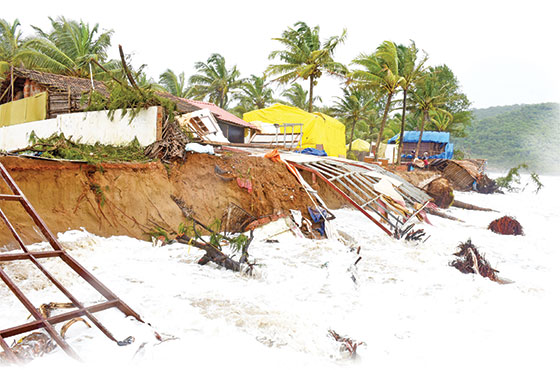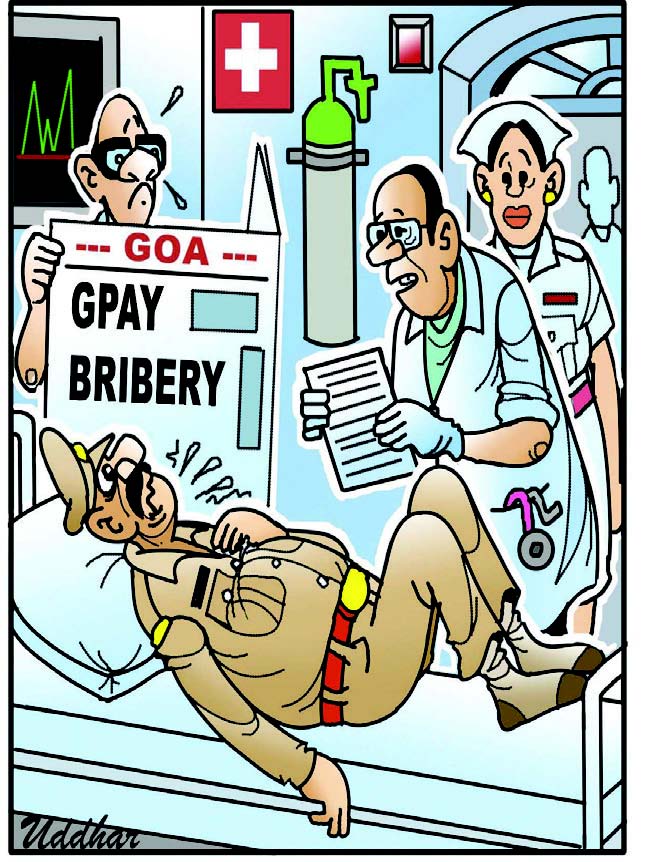
Over the last two days, people all over coastal communities of Goa attended two public consultative meetings, where they expressed their concerns about what the draft Coastal Zone Management Plan (CZMP) means for them and the future of their children.
There was a palpable sense of anger in the air as locals were upset with the manner in which the government has gone about this entire exercise.
Worse, there are people from Palolem to Pernem who have queries and the problems in one village may not be the same as the problems in another village. This by itself demonstrates why the public is against the government’s decision of holding one public hearing one day in each district, given that the views of lakhs of people are supposed to be heard in this single event.
So at the awareness meetings held on Thursday and Friday, which were created to assist the public in how to prepare for these public hearings, it took humour to get everyone on the same page.
“This draft CZMP has been presented like a fish thali. They have said these are the elements and this is what is kept on the plate for you, whether you like it or not,” said Goa’s leading environmental crusader, Claude Alvares to the gathering.
The crowd immediately started laughing and there was a drop in the prevailing pensive mood that was seen at the meetings convened by Goa Foundation (GF).
What they did not find to be a laughing matter however, is when it dawned upon them that if steps are not taken now, there could be a scenario in the future, where there may not be enough fish for Goa’s favourite fish thalis.
While recalling how Goa’s coast and fields have already suffered due to rising sea levels, cyclonic winds, unseasonal rains, it was pointed out that the State is already facing a climate change crisis and there could be a scenario that the future generation will have deal with far-reaching consequences that will affect life as we know it.
References at the meeting were made to how the UK Prime Minister, Boris Johnson, had earlier this week, warned world leaders climate change is harming "the most vulnerable populations around the planet".
The fact that climate change is not just a Goa issue a global one was not lost at the meeting with examples given how countries in different continents have been devastated by hurricanes, forest fires, tsunamis, earthquakes and other disasters.
There were problems closer to home as well.
“Do you remember recently, how the sea water had risen above the high tide line and had entered shacks? Do you remember how people from houses located near the shore or low-lying areas had to be evacuated during the rains due to flooding?” said one of the speakers at these meetings.
All these issues and more made it clear how important the CZMP is.
Simply put, if anyone wants to stop an activity they believe will cause their area harm, such as a structure in a Coastal Zone Regulation (CZR) region they can rely on the CZMP to raise their objections and halt such activity. Now if the structure shows on the CZMP then it could be a long drawn legal battle to address this later on, as the authorities will say they are going by the CZMP that has been passed.
The issues aren’t limited just to structures that appear to be illegal, it could also be a case of someone’s house that is not shown on the CZMP and how this could cause problems for the owner of the house later on.
It doesn’t have to be limited to properties alone; there have been cases where sand dunes are not shown in CRZ areas either. Claude questioned why the government couldn’t use the report on Sand Dunes that had been prepared by scientist Dr Antonio Mascarenhas of the National Institute of Oceanography (NIO), which would have solved this issue. He also spoke about how there are tools to restore such sand dunes but the important part is that they are properly marked on the CZMP plan.
“Fishing wards too have been shown haphazardly on the maps. Why did they not use the plans the village had drafted where all this was shown correctly? “questioned Royla Fernandes from Benaulim who said they had done a comprehensive study of their village and surrounding areas.
Abhijit Prabhudesai, activist who recently filed the Public Interest Litigation (PIL) asking for the scheduled public hearings to be postponed and not held on March 7, had the contention.
“All the villages had come out with their own Coastal Zone Management plan for their area. These were perfect. Instead of adopting these, they went ahead with their own plan,” he added.
While many plan to question why their village plans were not used and wanted reasons given for the same, the common consensus was that all these problems have risen because an agency not based in Goa and that doesn’t have in-depth knowledge of Goa’s age-old systems like khazan lands, has been entrusted with making this map.
Questions have also been raised as to how the draft CZMP, that has been prepared by the National Centre for Sustainable Coastal Management (NCSCM), Chennai, has changed CRZ zone classifications. “It appears that they are trying to reflect the ground status of Palolem, which falls under a municipality and not the fact that Palolem was once Goa’s most beautiful beach,” said another person at the meeting.
People are also struggling to gain access to the draft CZMP that has been sent to the panchayats and government offices like the taluka level deputy collector’s offices.
Locals, who have found errors on it, lamented that they had to spend a painstakingly large amount of time just trying to get their hands on the plan and then trying to understand the plan. Oswald Fernandes from Curtorim criticised how the maps have been stored at government offices and called for more public-friendly measures to be taken up. This is important as the people have to analyse the map and people have been finding trouble accessing the map offline or online. One requires a magnifying glass to identify which is their area on these maps. While the legend on the map explains the meaning behind the various ‘lines’ used, it has not been a very user-friendly experience for most.
A resident from Salcete pointed out faulty hazard lines in the map of Colva but added that he had to initially consult with others before confirming that his doubts were genuine.
“The part of our village in Navelim, Tiswadi itself is missing from the plan,” said another concerned citizen.
Locals questioned why the authorities like the Goa Coastal Zone Management Authority of Goa (GCZMA) did not try to hold programmes to help the locals understand the map better and answer their queries. For instance, as opposed to the common assumption that each individual village has a corresponding map, there are three to six maps per village, which cover the CRZ areas of that village.
On a larger note, Savio Santos from Carmona raised concerns about how the change in Central laws could see local bodies like panchayats and biodiversity committees being bypassed.
Others too are anxious about the Major Port Authorities Bill, 2020, which also seeks to replace the Major Port Trusts Act, 1963.
Even as the Chief Minister Pramod Sawant, tried to assuage the public recently about this Act, Claude, a legal expert, pointed out that Agriculture Minister Chandrakant Kavelkar had told the Goa Legislative Assembly that State planning laws will turn redundant with respect to the areas identified under the Bill.
Agnelo Rodrigues, President of Goenchea Raponkarancho Ekvott (GRE) said he was shocked to notice that the GCZMA have are marked or demarcated non-related items like Port limits and Aquaculture on the CZMP which is in contravention, which he said is in contravention of the CRZ notification.
“GCZMA has been lethargic and has once again prepared the draft CZMP 2021 in violation of the Annexure-I of CRZ Notification 2011 which has laid down clear guidelines for preparation of the CZMP,” he added.
GRE General Secretary, Olencio Simoes, who is also the Vice Chairperson National fishworkers Forum (NFF), pointed out that along with other associations, they had approached the court and district collectors demanding that the March 7 public hearings be postponed and instead held taluka-wise on different days.
“The CRZ Notification 2011 was passed with an intent to ensure livelihood security to the fisher communities and other local communities, living in the coastal areas and to conserve and protect coastal stretches, which very clearly is mention in the preamble of the CRZ notification 2011 and therefore the draft CZMP is of utmost important to the fishing community,” said Olencio.
GRE members further alleged that the government is conniving with the Port’s Sagarmala plan as far as the CZMP is concerned and pointed out as to how the GCZMA has been issuing demolition notices to the fishing community rather protecting them.
All eyes are now on whether the public hearing will happen on March 7 and if it will be marked with the kind of protests that were witnessed in 2019. At that time, people demanded that the plans prepared by their own villages be used, a demand that was ignored and is still a bone of contention in 2021.
On a concluding note, Claude underlined that nature has to be respected and that the power of the sea, such as energy from tidal waves are too strong for any structure to withstand and that in 20 years, the way the sea levels are increasing, there will be a lot of land portions that will go underwater.
“This is not just about today or tomorrow but about what will happen ever after our time. We are already in the time of the climate change crisis,” he remarked.
